Ordering Numbers
Ordering numbers involves arranging numbers in a particular sequence, either from the smallest to the largest (ascending order) or from the largest to the smallest (descending order).
Steps for Ordering Numbers
- Identify the numbers: Write down all the numbers that need to be ordered.
- Compare the numbers: Compare the numbers to determine their relative sizes.
- Arrange the numbers: Place the numbers in the correct order based on their size.
Ordering Integers
When ordering integers (positive and negative whole numbers), follow these steps:
- Identify the integers: Write down the integers that need to be ordered.
- Compare the integers: Compare the integers using the number line or by comparing their absolute values.
- Arrange the integers: Place the integers in the correct order based on their position on the number line or their absolute values.
Ordering Fractions
When ordering fractions, follow these steps:
- Identify the fractions: Write down the fractions that need to be ordered.
- Find a common denominator: If the fractions have different denominators, find a common denominator.
- Compare the fractions: Compare the fractions by converting them to have the same denominator, then compare their numerators.
- Arrange the fractions: Place the fractions in the correct order based on their relative sizes.
Ordering Decimals
When ordering decimals, follow these steps:
- Identify the decimals: Write down the decimals that need to be ordered.
- Compare the decimals: Compare the decimals place by place, starting from the leftmost digit.
- Arrange the decimals: Place the decimals in the correct order based on their place values.
Practice Problems
Now that you understand the steps for ordering numbers, let's practice with some problems:
- Order the integers -5, 3, -2, 0, 6 from least to greatest.
- Order the fractions 1/4, 2/5, 3/8, 5/12 from least to greatest.
- Order the decimals 0.6, 0.63, 0.605, 0.7 from least to greatest.
Once you have completed these practice problems, you'll have a good grasp of ordering numbers!
.◂Math Worksheets and Study Guides Seventh Grade. The Pythagorean Theorem
Study Guide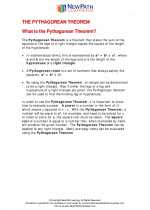 The Pythagorean Theorem
The Pythagorean Theorem  Study Guide
Study Guide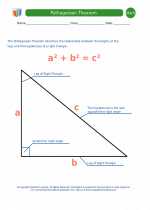 Pythagorean Theorem Definitions
Pythagorean Theorem Definitions  Worksheet/Answer key
Worksheet/Answer key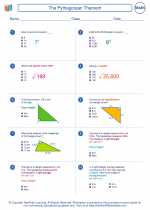 The Pythagorean Theorem
The Pythagorean Theorem  Worksheet/Answer key
Worksheet/Answer key The Pythagorean Theorem
The Pythagorean Theorem  Worksheet/Answer key
Worksheet/Answer key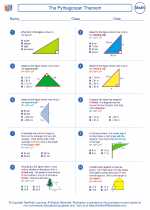 The Pythagorean Theorem
The Pythagorean Theorem  Worksheet/Answer key
Worksheet/Answer key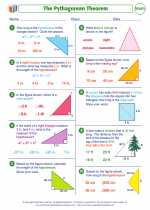 The Pythagorean Theorem
The Pythagorean Theorem  Worksheet/Answer key
Worksheet/Answer key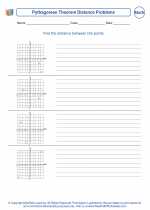 Pythagorean Theorem Distance Problems
Pythagorean Theorem Distance Problems  Worksheet/Answer key
Worksheet/Answer key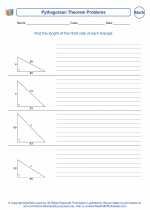 Pythagorean Theorem Problems
Pythagorean Theorem Problems  Worksheet/Answer key
Worksheet/Answer key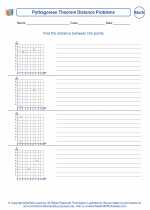 Pythagorean Theorem Distance Problems
Pythagorean Theorem Distance Problems  Worksheet/Answer key
Worksheet/Answer key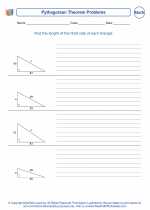 Pythagorean Theorem Problems
Pythagorean Theorem Problems  Worksheet/Answer key
Worksheet/Answer key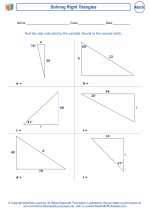 Solving Right Triangles
Solving Right Triangles  Worksheet/Answer key
Worksheet/Answer key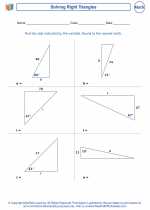 Solving Right Triangles
Solving Right Triangles 

 Study Guide
Study Guide
 Worksheet/Answer key
Worksheet/Answer key
 Worksheet/Answer key
Worksheet/Answer key
 Worksheet/Answer key
Worksheet/Answer key
 Worksheet/Answer key
Worksheet/Answer key
 Worksheet/Answer key
Worksheet/Answer key
 Worksheet/Answer key
Worksheet/Answer key
 Worksheet/Answer key
Worksheet/Answer key
 Worksheet/Answer key
Worksheet/Answer key
 Worksheet/Answer key
Worksheet/Answer key
 Worksheet/Answer key
Worksheet/Answer key

The resources above cover the following skills:
Geometry (NCTM)
Analyze characteristics and properties of two- and three-dimensional geometric shapes and develop mathematical arguments about geometric relationships.
Create and critique inductive and deductive arguments concerning geometric ideas and relationships, such as congruence, similarity, and the Pythagorean relationship.